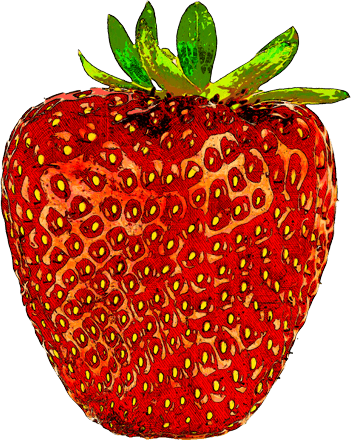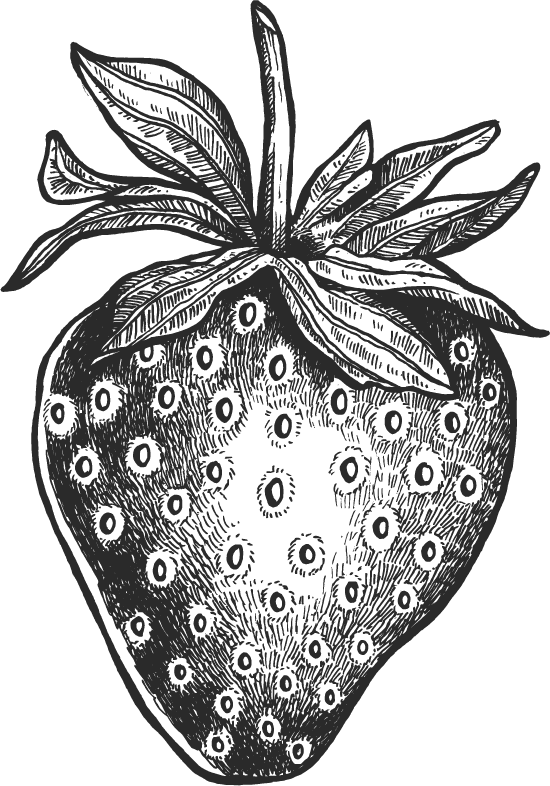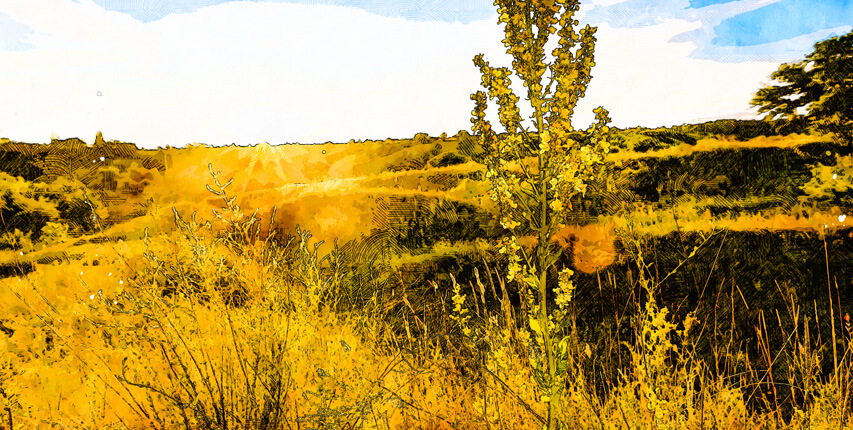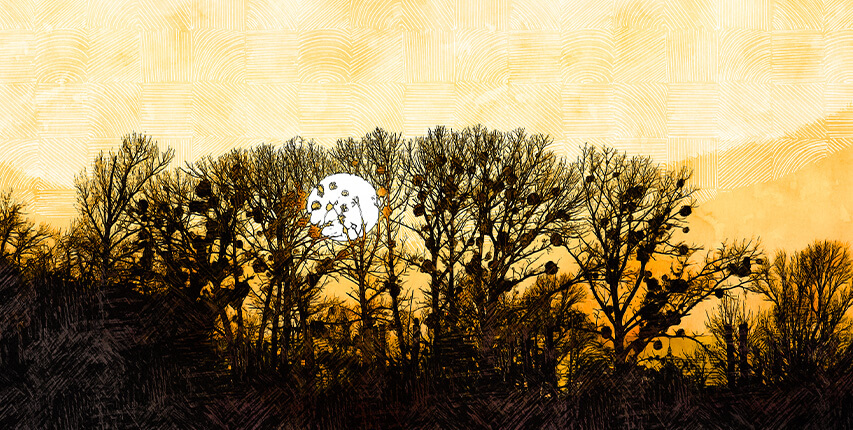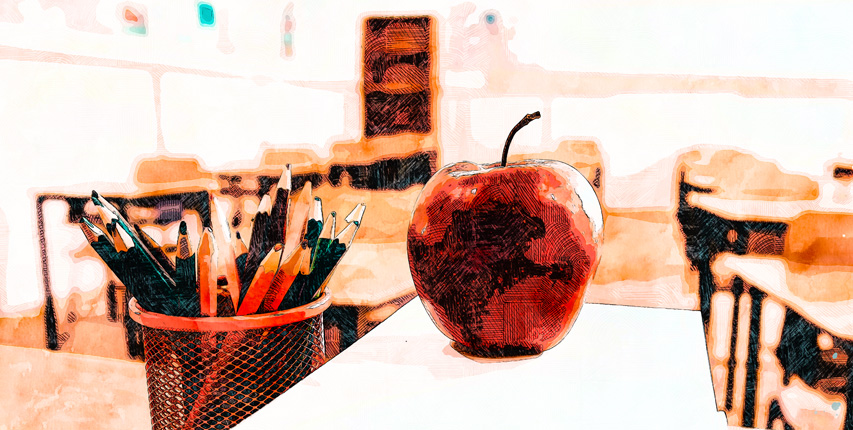The Short & Sweet on Strawberry Shortcake
Sink your fork into 10 fun facts about strawberry shortcake — with some berry good trivia sprinkled in plus a classic recipe to try at home.
1.
It's older than you might think
Strawberry shortcake dates back to at least the 1500s in Europe, where “short” referred to the use of fat (like butter or lard) in baked goods.
Early strawberry shortcakes were more like sweet biscuits than cakes — and were often served warm with butter, not whipped cream!
2.
The "Short" in Shortcake
“Short” doesn’t mean small—it comes from the term “shortening”, which gives the cake a crumbly, tender texture.
The word “short” in baking refers to any fat—like butter, lard, or shortening—that interferes with gluten formation, making pastries tender and crumbly instead of chewy. That’s why “shortbread” has that delicate melt-in-your-mouth texture!
3.
Strawberry Shortcake Day
June 14 is National Strawberry Shortcake Day in the U.S. Just in time for peak berry season!
National Strawberry Shortcake Day falls right in the middle of strawberry season in most of the U.S., when berries are at their sweetest and most abundant. Celebrating with shortcake dates back to old-fashioned summer socials and fairs, where it was a star dessert—especially when topped with fresh whipped cream and served outdoors.
4.
American Evolution
In the U.S., it evolved into a sweet biscuit or sponge cake layered with sugared strawberries and whipped cream—usually served in summer.
American-style strawberry shortcake took shape in the 19th century, combining European shortcakes with local ingredients and seasonal fruit. By the early 1900s, it became a staple of summer gatherings and Fourth of July picnics—loved for its balance of buttery cake, juicy berries, and fluffy cream.
5.
Not Always Cake
The “cake” can vary. Some use biscuits, others use angel food cake, pound cake, or even scones.
There’s no single “right” cake for strawberry shortcake—regional and personal variations abound. Biscuits give a buttery, flaky bite; sponge or angel food cakes offer light, airy sweetness; and scones add a rich, crumbly twist that holds up beautifully to juicy berries and cream.
6.
Strawberry Boom
Shortcake became wildly popular in the 1850s when strawberries became more widely cultivated in the U.S.
As strawberries became easier to grow and transport in the 1850s, shortcake surged in popularity across the U.S.—often featured at community strawberry socials. These gatherings celebrated the arrival of berry season and helped turn strawberry shortcake into a cherished summer tradition.
7.
Dessert of the Masses
It became a staple at church picnics and summer fairs, especially in the Midwest and South.
In the Midwest and South, strawberry shortcake became a beloved centerpiece of church picnics and local fairs—symbolizing both the sweetness of summer and the joy of gathering. Its simple ingredients made it easy to prepare for a crowd, and its seasonal freshness made it a highlight of warm-weather celebrations.
8.
Literary Sweetheart
Strawberry shortcake is referenced in classic literature, including in Louisa May Alcott’s “Little Women.”
Strawberry shortcake earns a sweet cameo in Little Women, where it’s part of a heartfelt gift the March sisters bring to a sick neighbor. The mention reflects how beloved—and familiar—this dessert already was in 19th-century American homes.
9.
Animated Fame
The dessert’s name was borrowed by the iconic Strawberry Shortcake character introduced by American Greetings in 1979.
The beloved Strawberry Shortcake character began as a simple greeting card illustration before blossoming into a full franchise of dolls, cartoons, and sweetly scented collectible figures in the 1980s—bringing the dessert’s name to a new generation of fans.
The original Strawberry Shortcake cartoon aired in 1980 as a TV special, followed by a series of animated specials throughout the ’80s.
The character became a cultural icon, especially among kids growing up in the ’80s and early ’90s, and has even been rebooted multiple times since then.
10.
World Record
The largest strawberry shortcake ever made weighed over 21,000 pounds in the Philippines in 2004!
The massive dessert was created in La Trinidad, Benguet — a region known for its strawberry farms.
It took thousands of eggs, gallons of cream, and more than a ton of strawberries to assemble the cake.
The event was part of the annual Strawberry Festival, celebrating the local harvest and setting a Guinness World Record.
Bonus Strawberry Trivia!
They’re Not True Berries
Botanically, strawberries aren’t true berries! Real berries (like blueberries) grow from a single ovary. Strawberries grow from a flower with multiple ovaries—each seed on the outside is its own fruit!
Strawberries belong to a group called aggregate fruits — each tiny seed on the outside is actually its own fruit. Unlike true berries, they develop from multiple parts of a flower instead of just one.
Seeds on the Outside
Strawberries are the only fruit with their seeds on the outside—on average, there are about 200 seeds per berry.
Each strawberry holds around 200 tiny seeds on its surface, a unique trait among fruits. These seeds, called achenes, are actually individual fruits containing the strawberry’s real seeds inside.
Ancient Roots
Wild strawberries have been eaten since Roman times, prized not just for their flavor but for supposed medicinal uses.
Ancient Romans enjoyed wild strawberries for their sweet taste and believed they had healing powers — using them to treat everything from depression to digestive issues. They were also associated with love and purity in early folklore.
Symbol of Love
In ancient times, strawberries were considered a symbol of Venus, the goddess of love—possibly due to their heart shape and vibrant red color.
Strawberries’ heart-like shape and rich red color made them a natural emblem of Venus, the Roman goddess of love. In art and myth, they symbolized romance, purity, and even secret desire — making them as meaningful as they were delicious.
France had Strawberry Gardens for Royalty
In the 1300s, the French began transplanting wild strawberries into gardens, especially for the royal court.
By the 1300s, the French were cultivating wild strawberries in royal gardens, not just for eating but also for their beauty and scent. These early garden varieties were seen as both a delicacy and a symbol of refinement among the nobility.
America’s Favorite Fruit?
Strawberries consistently rank in the top five most popular fruits in the U.S. and are the most grown berry in the country.
Strawberries top the list of America’s favorite berries, with over 1.5 billion pounds grown annually. Thanks to their versatility, sweetness, and long growing season—especially in California—they’ve become a staple in everything from breakfast to dessert.
California Dreaming
California grows nearly 90% of the strawberries in the United States—about 2 billion pounds a year!
California’s mild coastal climate makes it ideal for strawberry farming nearly year-round. With over 30,000 acres dedicated to strawberries, the state produces enough each year to give every person in the U.S. about six pounds!
Pick Carefully
Strawberries don’t ripen after picking, so what you see is what you get—look for deep red color and fragrance.
Unlike bananas or tomatoes, strawberries are non-climacteric, meaning they don’t continue to ripen once harvested. That’s why farmers pick them at peak ripeness—and why it’s best to buy berries that already look and smell delicious!
Short Season Big Impact
While peak season is late spring to early summer, advances in farming mean strawberries are now available almost year-round.
Thanks to innovations in greenhouse growing, drip irrigation, and careful crop rotation—especially in places like California and Florida—strawberries can now be harvested in different climates nearly every month of the year. Still, the juiciest, most flavorful berries tend to appear during peak local seasons.
Record Breaker
The largest strawberry ever recorded was grown in Japan in 2015—it weighed over 8.8 ounces (more than half a pound)!
This giant strawberry, grown by Koji Nakao in Fukuoka, Japan, set a Guinness World Record in 2015. It measured over 3 inches tall and wide, likely formed when multiple berries fused together during growth—a phenomenon known as fasciation.
Vocabulary
* Shortening – A type of fat used in baking (like butter, lard, or vegetable shortening) that interferes with gluten formation, resulting in a crumbly, tender texture.
Related to: The word shortcake, where “short” refers to this tenderizing effect.
* Ovary (Botany) – The part of the flower that develops into fruit after fertilization.
Context: True berries develop from a single ovary, but strawberries form from multiple ovaries—each tiny seed on the outside is its own fruit.
* Aggregate Fruit – A fruit that forms from multiple ovaries of one flower.
Example: Strawberries are aggregate fruits, not true berries.
* Perennial – A plant that lives for more than two years and typically produces fruit seasonally.
Context: Wild strawberries are perennials and have been cultivated since ancient times.
* Fasciation – A plant mutation that causes abnormal growth, sometimes resulting in unusually large or fused fruit.
Context: The giant strawberry in Japan likely formed from fasciation.
Test Your Knowledge!
Strawberries & Strawberry Shortcake Trivia
A fun, fast-paced quiz to test and see what you can recall about the fun facts above! Try quick mode for a fast challenge or take the full quiz to see how much you really know!
